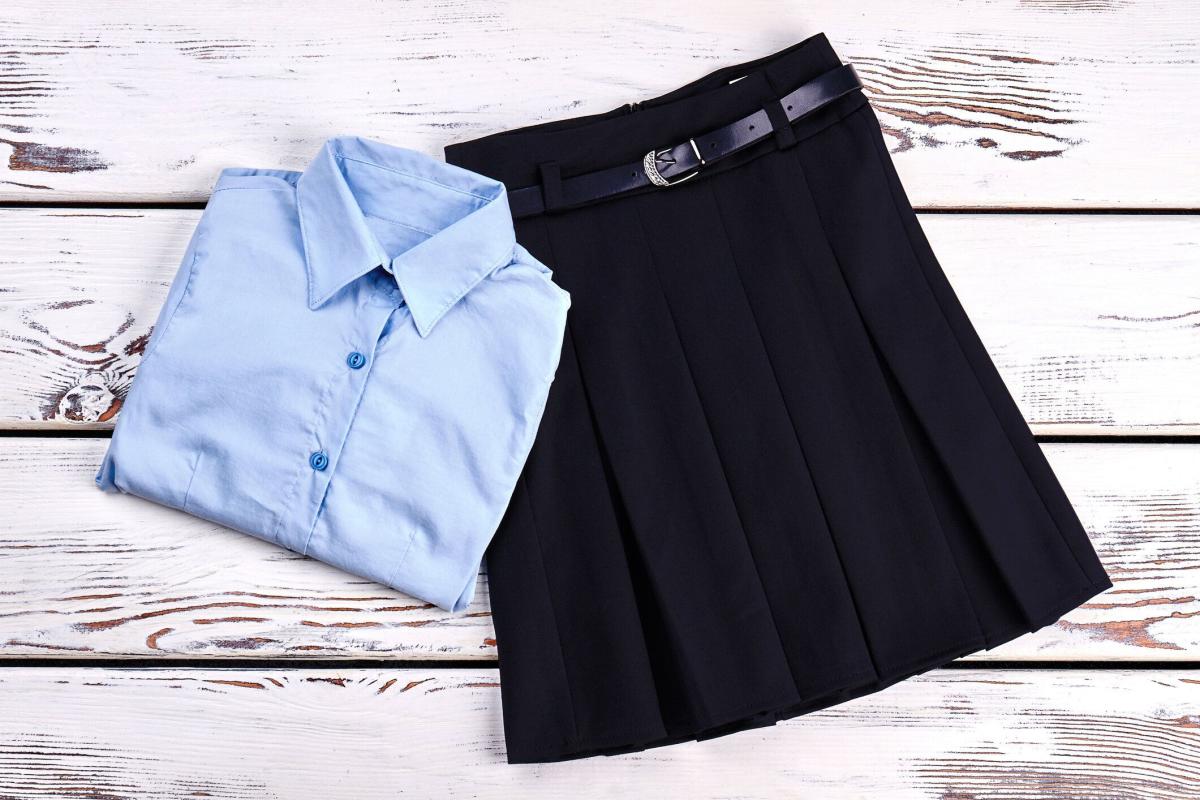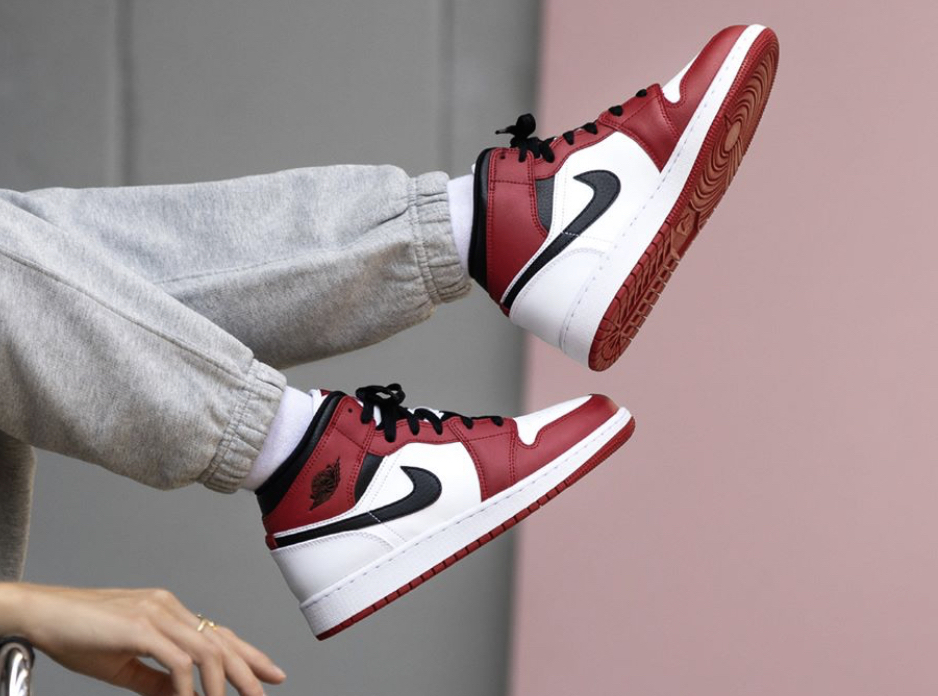Skirt rising, a common wardrobe challenge, refers to the undesirable phenomenon where a skirt tends to ride up higher than desired during movement, walking, or sitting.
Moreover, this can lead to discomfort, self-consciousness, and even potential wardrobe malfunctions.
To prevent a skirt from riding up, consider these tips:
- Choose heavier fabrics.
- Wear a slip or underskirt.
- Opt for slightly longer skirts.
- Select pleats or A-line styles.
- Use wrap or tie closures.
- Apply fashion tape at the hem.
- Wear tights or leggings.
- Add a secure belt.
- Ensure a well-fitting waistband.
- Tuck in a top for added weight.
- Position yourself with your back to the wind.
- Hold the skirt down when needed.
How Can You Understand The Factors?
Understanding the factors behind skirt riding can unveil a world of solutions for maintaining a comfortable and confident look.
Fabric Choice and its Impact on Movement
Basically, the type of fabric a skirt is made from plays a pivotal role in whether it will ride up. Lightweight and slippery fabrics like silk or satin have a tendency to cling to the skin and allow for more movement.
Additionally, which can contribute to the rising issue. On the other hand, heavier fabrics with more structure, such as denim or wool, tend to stay in place more effectively.
Furthermore, understanding the fabric’s properties and how it interacts with the body is crucial in choosing skirts that minimize the risk of rising.
Proper Fit and its Role in Preventing Rising
A well-fitting skirt significantly reduces the likelihood of rising. When a skirt is too tight, it lacks the necessary freedom of movement, causing it to ride up as the body moves.
Conversely, an excessively loose skirt can shift around easily, leading to the same problem. Achieving the right balance between comfort and snugness ensures that the skirt moves with the body without compromising its position.
Waistband Styles and Their Influence on Skirt Stability
The design of the waistband can greatly impact skirt stability. High-waisted skirts tend to stay in place better because they are anchored closer to the natural waistline.
Moreover, wide waistbands distribute pressure more evenly, reducing the chances of bunching or riding up.
Elastic waistbands, while comfortable, can sometimes contribute to rising due to their stretchiness. Exploring different waistband styles and their effects on skirt stability helps in making informed choices when purchasing or styling skirts.
What Are The Practical Solutions?
Exploring practical solutions to tackle the issue of skirt riding unveils a range of techniques ensuring a hassle-free and stylish experience.
Wearing the Right Undergarments
Slip Shorts and Their Benefits
Slip shorts are a versatile undergarment designed to be worn underneath skirts and dresses. They are typically made from lightweight, breathable fabrics that help to create a smooth surface between the skirt and the skin.
In addition, slip shorts offer several benefits in preventing skirt rising.
- Firstly, they provide a friction barrier that minimizes the tendency of the skirt to cling to the skin.
- Secondly, they add an extra layer that helps the skirt move independently, reducing friction that can cause riding up.
- Additionally, slip shorts come in various lengths, allowing you to choose the most suitable option based on your skirt length and personal comfort preferences.
Seamless Options to Minimize Visibility
Seamless undergarments, such as seamless briefs or thongs, are designed to have no visible seams that could create bumps or lines under your skirt.
Moreover, these undergarments offer a smooth and discreet foundation, ensuring that the skirt flows naturally over your body without catching on any seams. This choice is especially valuable when wearing skirts made from thin or clingy fabrics.
Using Fashion Tape and Adhesive Products
How to Apply and Remove Safely
Fashion tape, often referred to as double-sided tape, is a useful tool for securing clothing in place.
Additionally, it can be applied strategically along the waistband or inner hem of a skirt to prevent it from riding up. When applying fashion tape, ensure your skin is clean and dry to enhance adhesive effectiveness.
To remove, gently peel the tape off, being cautious not to damage the fabric. Always follow the manufacturer’s instructions for safe usage.
Suitable Situations for Adhesive Solutions
Fashion tape is particularly effective in situations where you want to maintain a specific look for a short period.
For instance, if you’re attending an event and don’t want to constantly adjust your skirt, fashion tape can be a quick fix.
However, it may not be the best solution for all-day wear or situations involving significant movement.
Incorporating Accessories for Assistance
Belts to Hold the Skirt in Place
Belts are not only fashionable accessories but can also serve a functional purpose in preventing skirt rising.
Moreover, a well-chosen belt can help anchor the skirt at the waist, reducing the likelihood of it riding up during movement. Opt for a belt that compliments your outfit and is designed to fit your waist comfortably.
Waist Cinchers for Added Security
Waist cinchers are undergarments designed to provide shaping and support to the waist and abdomen.
Additionally, they can be worn underneath skirts to create a more defined waistline and help secure the skirt in place. Waist cinchers come in various styles, including those with adjustable closures or boning for additional structure.
Tailoring and Alterations for Personalized Fit
Professional Adjustments to Prevent Rising
Taking a skirt to a professional tailor for alterations can be a valuable investment. Tailors can make precise adjustments to the waistband, hips, or length.
Moreover it ensures the skirt fits your body shape perfectly. A well-fitted skirt is less likely to shift or ride up during movement.
DIY Alterations for a Custom Solution
If you’re skilled with sewing, you can explore DIY alterations to customize your skirts. Adjusting the waistband, adding darts, or taking in the sides can all contribute to a more secure fit.
However, ensure that you have the necessary skills and tools to avoid damaging the skirt.
What Are The Styling Considerations?
Delving into the realm of styling considerations offers insights into how to elegantly conquer the challenge of skirt riding while staying fashion forward.
Optimal Skirt Lengths and Styles
Lengths that Minimize Rising
Choosing the right skirt length can play a significant role in minimizing the occurrence of skirt rising.
Midi-length skirts (falling around mid-calf) and maxi skirts (reaching the ankles) are generally less prone to riding up compared to shorter lengths like mini skirts.
Moreover, these longer lengths provide more fabric to drape over the body, reducing the chances of movement-related shifts.
A-line vs. Pencil Skirts: Pros and Cons
A-line skirts and pencil skirts have distinct characteristics that can influence skirt rising:
A-line Skirts: These skirts flare out gently from the waist, allowing for ease of movement.
Moreover, they are less likely to ride up due to their flowy nature. A-line skirts can be particularly effective for individuals who experience frequent skirt rising.
Pencil Skirts: Pencil skirts are more form-fitting and may have a higher likelihood of riding up, especially when the fabric lacks stretch.
However, when properly fitted, pencil skirts can still offer a sleek and sophisticated look. Wearing slip shorts or employing other prevention methods can help mitigate the issue.
Layering Techniques for Added Security
Pairing with Leggings or Tights
Layering your skirt with leggings or opaque tights adds an extra layer of coverage and security. Leggings or tights not only prevent the skirt from riding up but also provide warmth in colder weather.
Furthermore, choose neutral colors that complement your outfit and ensure that the leggings or tights have a comfortable waistband to prevent discomfort.
Using Slip Skirts as an Additional Layer
Slip skirts are not only useful as undergarments but also as a stylish layering option. Wearing a slip skirt underneath your main skirt can provide extra coverage and a smooth surface, reducing friction that leads to rising.
In addition, choose a slip skirt that matches the length of your outer skirt for optimal results.
FAQs
How can I prevent my skirt from riding up?
Choose well-fitting slip shorts or seamless undergarments to minimize friction and provide an extra layer between your skin and the skirt.
What is fashion tape used for?
Fashion tape is double-sided adhesive that helps secure clothing in place, including preventing skirts from riding up.
Can belts help prevent skirt rising?
Yes, wearing a belt can provide extra security by anchoring the skirt at the waist and minimizing movement.
Are there specific skirt lengths that are less prone to riding up?
Midi and maxi skirts (mid-calf to ankle lengths) are generally less prone to riding up compared to mini skirts.
How can I enhance the security of my skirt when walking or sitting?
Practice mindful walking with shorter steps and arrange the skirt neatly when sitting to prevent bunching.
Can I use safety pins to prevent skirt rising?
Yes, discreetly placed safety pins along the inner hem or waistband can provide a temporary solution to keep the skirt in place.
Are there DIY solutions for emergencies when my skirt starts riding up?
In emergencies, you can use everyday items like paper clips or hairpins to temporarily secure your skirt and prevent rising.
Conclusion
In conclusion, addressing the challenge of skirt rising is essential for enhancing comfort, confidence, and overall enjoyment when wearing skirts. By considering various factors and implementing practical solutions, individuals can overcome this common wardrobe concern.
In addition, through careful fabric selection, proper fit, and waistband choices, the risk of skirt rising can be minimized.
Moreover, incorporating undergarments like slip shorts or seamless options, as well as using fashion tape, provides reliable methods for keeping skirts in place.
Accessories such as belts and waist cinchers offer both functional and stylish ways to prevent rising, while tailoring and alterations ensure a personalized fit that caters to individual body shapes.
However, when it comes to styling, choosing optimal skirt lengths and styles, as well as utilizing layering techniques, adds layers of security against movement-related issues.











